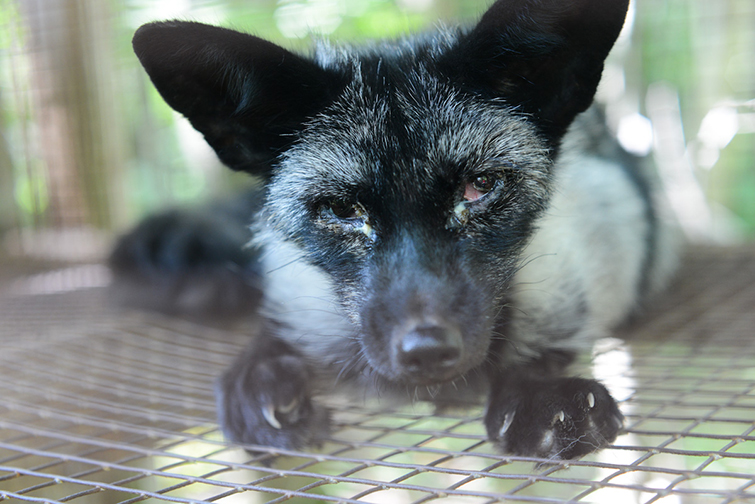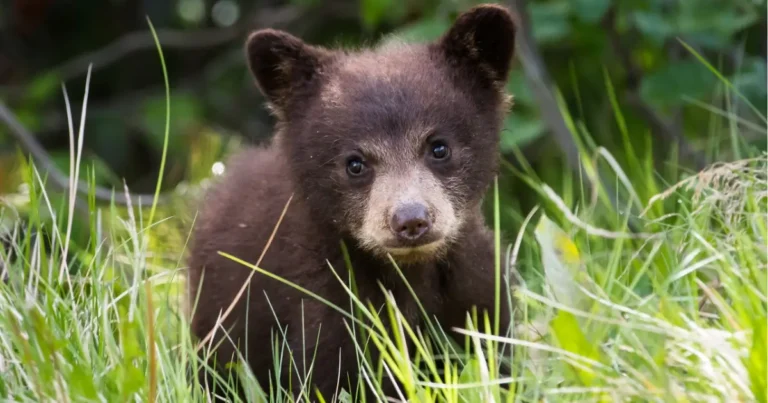
Check out the extended interview by CTV in Montreal here.
Rather than just bash on Alan for being who he is – the mouthpiece of a fur lobby group – we thought we’d take the higher road, and bash specifically on his comments.
“Anytime you hear a story of animals in distress, it’s of great concern to the industry and to the mink farmers who work very hard to care for their animals. They care for them not only as a moral responsibility, but it’s the only way you can ensure that you produce high-quality furs.”
Of course it’s of great concern to fur farmers. Bad publicity drives down demand, which in turn drives down the price per pelt they achieve. It’s kind of like General Motors saying they hate it when cars spontaneously combust.
But the important part of this quote – an early one from the interview – is something Alan repeats over and over again: “it’s the only way you can ensure that you produce high-quality furs.”
On the face of it, this has a certain logic. A healthy animal means a healthy fur, right? Wrong.
When the only target of health is the quality of fur, a lot can fall by the wayside. We reached out to Dr. Sherri Cox, a wildlife veterinarian, to ask her to confirm or explain away Alan’s comment.
“Animal fur can look healthy yet animals may suffer from multiple illness and injury, such as broken bones, eye and ear infections, emaciation from lack of caloric intake, and dehydration to name a few,” she said in an email to APFA. “A well-balanced, healthy diet contributes to good fur condition, but sadly diet alone does not preclude other injuries and illness from occurring.”
And we know from evidence presented in the case of this specific fur farm in Quebec that these and many other injuries and ailments were prevalent:
- dehydration
- emaciation
- toe fractures
- tail injuries
- tooth fractures
- ear and eye infections
- internal bleeding
- neurological issues
“With all due respect, some groups don’t think we should have fur farms at all – when a case like this happens, they want to really make it into a big story in order to criticise the whole industry. I have to think the government vets who are there must be able to judge what’s the appropriate action.”

Never mind that the Humane Society International/Canada, Montreal SPCA and a team of wildlife veterinarians and techs ruled that these animals are unhealthy… the government official says it’s a-OK.
And of course animal welfare groups are going to use this opportunity to discuss fur farms – since your lobbying efforts prevent any real legislation or laws, let alone surprise inspections and enforcement, we rarely have the chance.
“When the incentive of the farmer is to follow those codes, there’s no contradiction between animal welfare and commercial success in mink farming.”
This was Alan’s second response to the second time the reporter asked about updating laws, regulation and enforcement. Since there are no real requirements beyond basic land-use permits and paying taxes, let alone animal welfare, there’s very little regulation or oversight of fur farms.
Alan claims, again, that high-quality fur requires high-quality care. As evidenced already, this is false.
He did a pretty solid job, from a PR point-of-view, of evading the reporter’s direct questions. So let’s speculate on his behalf: why wouldn’t Alan and the Fur Council of Canada want regulations in law, as opposed to a voluntary code of practice?
Could it be because he knows that not all farms meet this code of practice? That it doesn’t truly address the emotional, mental and physical needs of the highly intelligent animals they keep in tiny cages? Or maybe they’re just afraid of something like proper waste disposal and environmental controls cutting into the bottom line?
It’s hard to say. But there are more arguments for regulation – particularly when virtually none exist at present time – than there are against.
More particularly, if this code of practice is so strong and the community so intelligent, why didn’t they rat out (pardon the pun) the individual breaking it? Why didn’t they come out and strongly condemn his actions? Why are they only spinning and not acting on behalf of the animals at this farm:
The FCC is a lobbying party – their single goal is to promote the fur industry. That doesn’t mean they want to protect animals, the environment or consumers; it just means they want to make money.
Alan’s interview, as usual, left people asking more questions than there were answers available. It’s important that the truth get out there. Whether it is through our resources or another non-profits is not relevant.
The more consumers know about fur farming, the less likely they are to purchase fur products, the more likely they are to talk to their elected representatives and the more likely we are to live in a truly humane, fur-free Canada.

